How to change the password of Word document?
php editor Strawberry will introduce how to change the password of a Word document in this article. At work or study, we often use Word documents to store important information. Setting a password can better protect the security of the document. If you want to change the password of an existing document, you can do so in simple steps. Next, we will introduce in detail how to change the password of a Word document so that you can easily master this skill.
Let’s take a look at how to modify the three commonly used passwords for Word documents.
1. Open password
If we want to modify the "open password", we need to open the Word document through the password before operating.
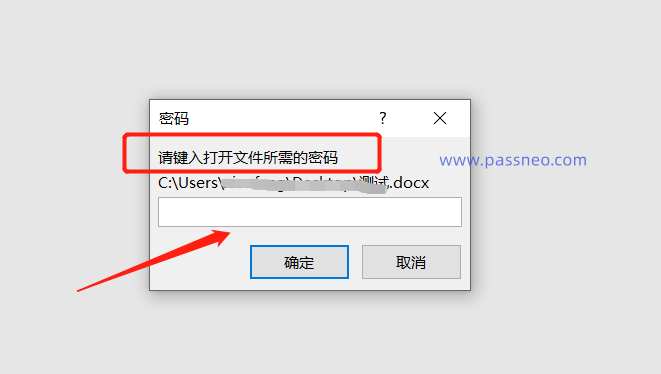
Then, follow the operation process of setting a password, and click the menu tab [File] → [Information] → [Protect Document] → [Encrypt with Password];
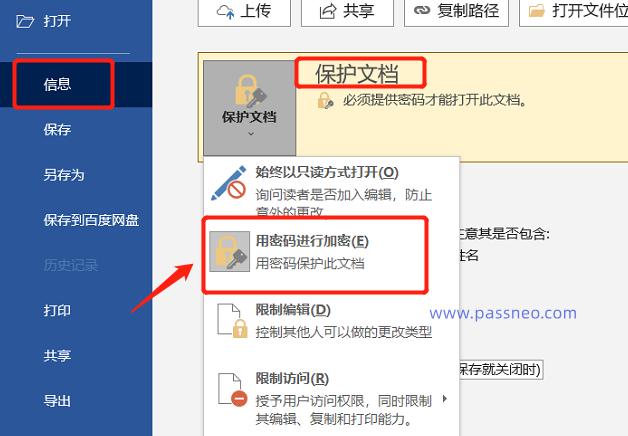
After the [Encrypted Document] dialog box pops up, you can see that the original password already exists in the password field. Delete the password, enter the new password you want to set, click [OK] and enter it again. After saving the file, The "open password" of the Word document has been modified.
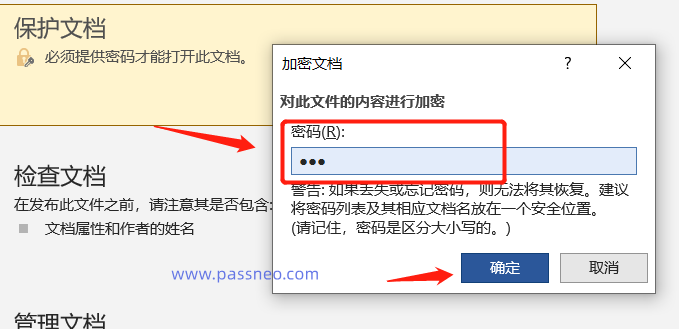
2. “Restrict editing password”
If editing restrictions are set on a Word document, editing, modification, etc. cannot be performed. However, the "restriction password" cannot be modified directly. You can only lift the restriction and then reset a new password.
To remove "restrictions", you need to click [Restrict Editing] in the menu option [Review] list, and then click [Stop Protection] on the page that appears. After the [Unprotect Document] dialog box pops up, enter the originally set password. You can then lift the "restricted editing" of the Word document.
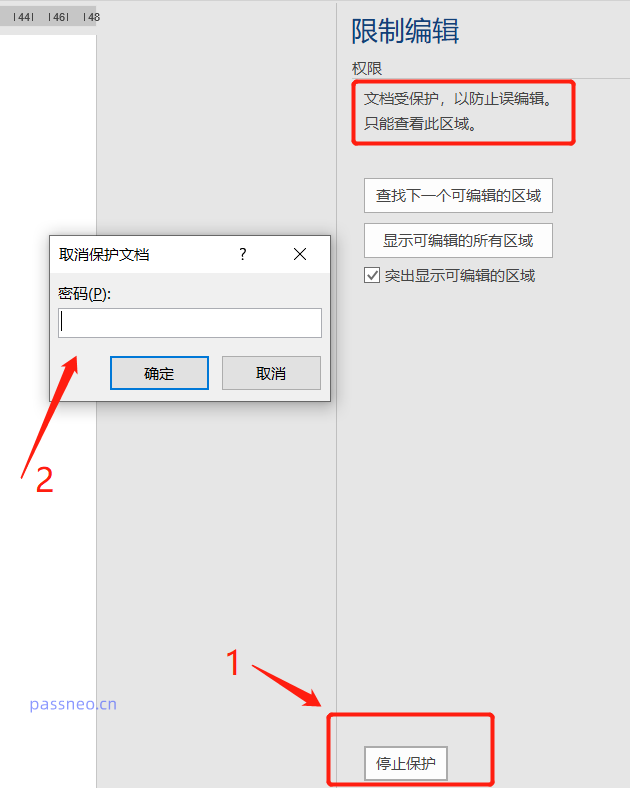
3. “Read-only password”
The Word document is set to open in "read-only mode", which protects the document from being able to save the original document even if it is edited and modified.
"Read-only password" is different from the previous two passwords. It can be modified without using the original password.
First, after opening the Word document, click [Read Only] to enter read-only mode;
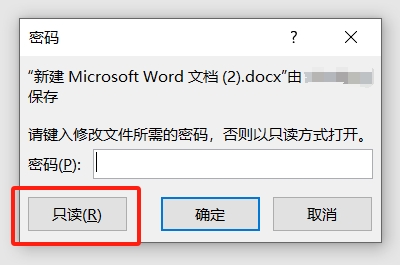
Then, click the menu tab [File] → [Save As], in the [Save As] dialog box, click [General Options] in the [Tools] option list;
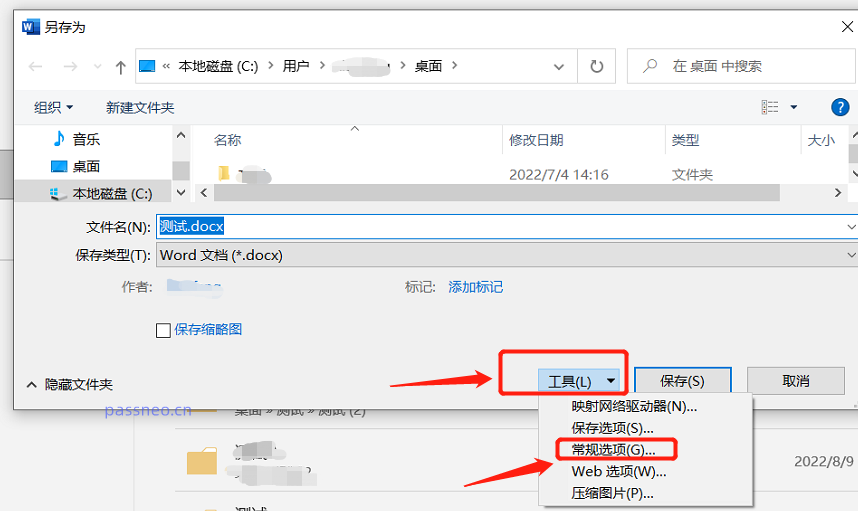
After the [General Options] dialog box pops up, enter the new password you want to set in the [Password when modifying file] column, click [OK] and re-enter it, and then save the document.
It should be noted that when saving a document, the file name must be modified before saving , because the document is opened in "read-only mode" and cannot be saved with the original file name.
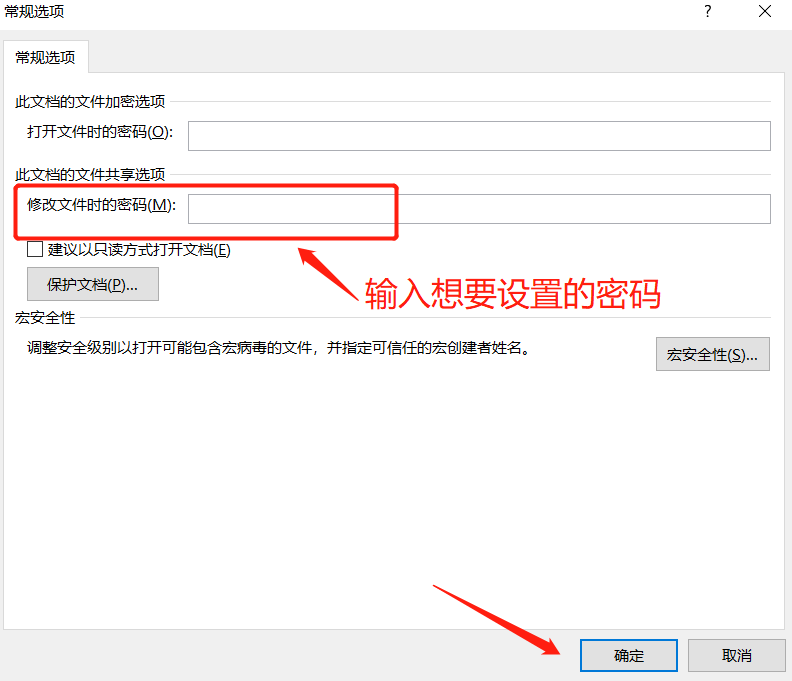
If you do not want to rename the Word document after changing the "read-only password", then you need to enter the password to obtain write permission when opening the Word document, and then change the password .
After entering the password to open the Word document, follow the same operation process. In the [Save As] dialog box, you can see that a password already exists in the [Password when modifying file] column. After deleting the password, enter the desired Set the new password, click [OK] and re-enter it, then save the file and the password will be modified.
After changing the password in this way, you can save the Word document directly without renaming it.
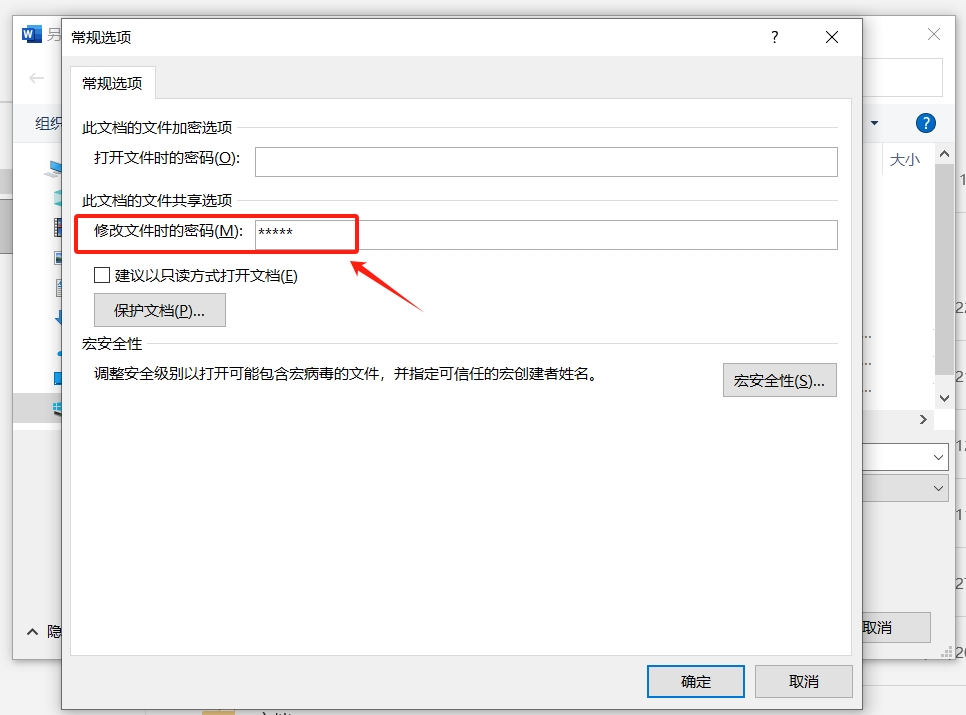
It can be seen from the above method that in addition to the "read-only password" of the Word document, the other two items, that is, the "open password" and "restriction password" require the original password to be entered before it can be modified. If you forget the password How to do it?
In this case, we can use tools to solve the problem.
For examplePepsi Niu Word Password Recovery Tool can solve the problem of forgetting the "open password" and "restriction password" of Word documents at the same time.
There are two modules in the tool. [Retrieve Password] provides 4 methods to retrieve the "open password" of a Word document. [Unrestriction] can directly remove the "restriction password" of a Word document without a password.

The above is the detailed content of How to change the password of Word document?. For more information, please follow other related articles on the PHP Chinese website!

Hot AI Tools

Undresser.AI Undress
AI-powered app for creating realistic nude photos

AI Clothes Remover
Online AI tool for removing clothes from photos.

Undress AI Tool
Undress images for free

Clothoff.io
AI clothes remover

AI Hentai Generator
Generate AI Hentai for free.

Hot Article

Hot Tools

Notepad++7.3.1
Easy-to-use and free code editor

SublimeText3 Chinese version
Chinese version, very easy to use

Zend Studio 13.0.1
Powerful PHP integrated development environment

Dreamweaver CS6
Visual web development tools

SublimeText3 Mac version
God-level code editing software (SublimeText3)

Hot Topics
 1359
1359
 52
52
 How to Reduce the Gaps Between Bars and Columns in Excel Charts (And Why You Should)
Mar 08, 2025 am 03:01 AM
How to Reduce the Gaps Between Bars and Columns in Excel Charts (And Why You Should)
Mar 08, 2025 am 03:01 AM
Enhance Your Excel Charts: Reducing Gaps Between Bars and Columns Presenting data visually in charts significantly improves spreadsheet readability. Excel excels at chart creation, but its extensive menus can obscure simple yet powerful features, suc
 5 Things You Can Do in Excel for the Web Today That You Couldn't 12 Months Ago
Mar 22, 2025 am 03:03 AM
5 Things You Can Do in Excel for the Web Today That You Couldn't 12 Months Ago
Mar 22, 2025 am 03:03 AM
Excel web version features enhancements to improve efficiency! While Excel desktop version is more powerful, the web version has also been significantly improved over the past year. This article will focus on five key improvements: Easily insert rows and columns: In Excel web, just hover over the row or column header and click the " " sign that appears to insert a new row or column. There is no need to use the confusing right-click menu "insert" function anymore. This method is faster, and newly inserted rows or columns inherit the format of adjacent cells. Export as CSV files: Excel now supports exporting worksheets as CSV files for easy data transfer and compatibility with other software. Click "File" > "Export"
 How to Use LAMBDA in Excel to Create Your Own Functions
Mar 21, 2025 am 03:08 AM
How to Use LAMBDA in Excel to Create Your Own Functions
Mar 21, 2025 am 03:08 AM
Excel's LAMBDA Functions: An easy guide to creating custom functions Before Excel introduced the LAMBDA function, creating a custom function requires VBA or macro. Now, with LAMBDA, you can easily implement it using the familiar Excel syntax. This guide will guide you step by step how to use the LAMBDA function. It is recommended that you read the parts of this guide in order, first understand the grammar and simple examples, and then learn practical applications. The LAMBDA function is available for Microsoft 365 (Windows and Mac), Excel 2024 (Windows and Mac), and Excel for the web. E
 How to Use the AVERAGEIF and AVERAGEIFS Functions in Excel
Mar 07, 2025 am 06:03 AM
How to Use the AVERAGEIF and AVERAGEIFS Functions in Excel
Mar 07, 2025 am 06:03 AM
Quick View of AVERAGEIF and AVERAGEIFS Functions in Excel Excel's AVERAGEIF and AVERAGEIFS functions can be used to calculate the average value of a dataset. However, unlike simpler AVERAGE functions, they are able to include or exclude specific values in the calculation. How to use the AVERAGEIF function in Excel Excel's AVERAGEIF function allows you to calculate the average value of a filtered dataset based on a single condition set. AVERAGEIF function syntax The AVERAGEIF function contains three parameters: =AVERAGEIF(x,y,z)
 If You Don't Use Excel's Hidden Camera Tool, You're Missing a Trick
Mar 25, 2025 am 02:48 AM
If You Don't Use Excel's Hidden Camera Tool, You're Missing a Trick
Mar 25, 2025 am 02:48 AM
Quick Links Why Use the Camera Tool?
 Microsoft Excel Keyboard Shortcuts: Printable Cheat Sheet
Mar 14, 2025 am 12:06 AM
Microsoft Excel Keyboard Shortcuts: Printable Cheat Sheet
Mar 14, 2025 am 12:06 AM
Master Microsoft Excel with these essential keyboard shortcuts! This cheat sheet provides quick access to the most frequently used commands, saving you valuable time and effort. It covers essential key combinations, Paste Special functions, workboo
 Use the PERCENTOF Function to Simplify Percentage Calculations in Excel
Mar 27, 2025 am 03:03 AM
Use the PERCENTOF Function to Simplify Percentage Calculations in Excel
Mar 27, 2025 am 03:03 AM
Excel's PERCENTOF function: Easily calculate the proportion of data subsets Excel's PERCENTOF function can quickly calculate the proportion of data subsets in the entire data set, avoiding the hassle of creating complex formulas. PERCENTOF function syntax The PERCENTOF function has two parameters: =PERCENTOF(a,b) in: a (required) is a subset of data that forms part of the entire data set; b (required) is the entire dataset. In other words, the PERCENTOF function calculates the percentage of the subset a to the total dataset b. Calculate the proportion of individual values using PERCENTOF The easiest way to use the PERCENTOF function is to calculate the single
 How to Create a Timeline Filter in Excel
Apr 03, 2025 am 03:51 AM
How to Create a Timeline Filter in Excel
Apr 03, 2025 am 03:51 AM
In Excel, using the timeline filter can display data by time period more efficiently, which is more convenient than using the filter button. The Timeline is a dynamic filtering option that allows you to quickly display data for a single date, month, quarter, or year. Step 1: Convert data to pivot table First, convert the original Excel data into a pivot table. Select any cell in the data table (formatted or not) and click PivotTable on the Insert tab of the ribbon. Related: How to Create Pivot Tables in Microsoft Excel Don't be intimidated by the pivot table! We will teach you basic skills that you can master in minutes. Related Articles In the dialog box, make sure the entire data range is selected (




